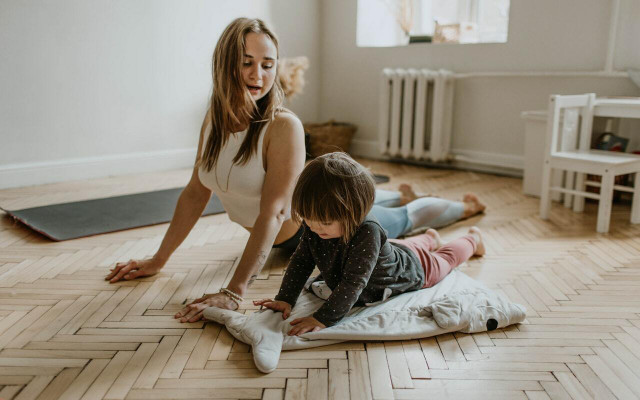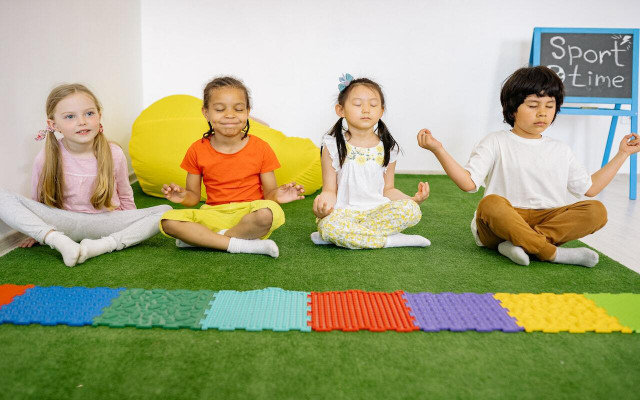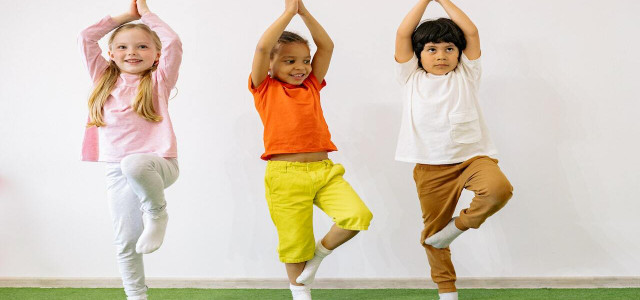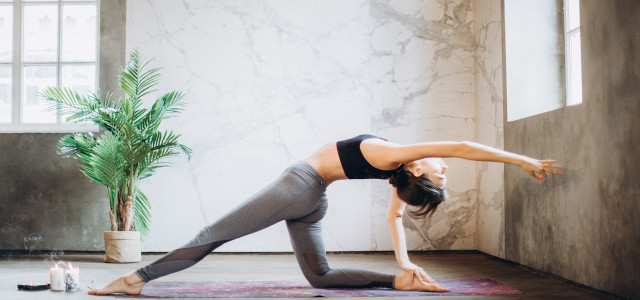Yoga works to improve the physical and emotional well-being of children. We’ll tell you the benefits of yoga for children, and give you four moves to start with.
Yoga is a mindfulness practice and exercise that can benefit both adults and children alike. While many adults are used to a quiet and calming hour long yoga class that focuses a lot on breathing and meditation, yoga for children is very different. Children’s yoga is more interactive as it can incorporate games, singing songs, and even storytelling, making it more engaging. Yoga is an excellent way to improve a child’s physical and mental health, and there are many benefits for children who practice yoga. The exercise is becoming increasingly popular among children, with a national survey finding that 3 percent of US children (1.7 million) practiced yoga in 2012, which was 400,000 more children than in 2007.
The Benefits of Yoga For Children

Children can benefit greatly from yoga practice in many different ways. Some schools have even begun to integrate yoga into their sports programmes because of how beneficial it is. The benefits of yoga for children include:
- Improves quality of sleep. A study by Stanford University has found that mindfulness training that involves deep breathing and yoga helps children to sleep better. There are even certain yoga poses for better sleep.
- Improves attention span. Yoga also helps children to concentrate better. A paper published by the National Association of School Psychologists has found that yoga was effective at helping children to concentrate and focus better.
- Improves mental well-being. A 2014 study has found that yoga is an effective tool for children to deal with stress and to help regulate themselves and their emotions. The study describes how yoga can be used as a tool for children to gain emotional balance through training their mind and body. A 2015 study has also found that yoga can help to reduce anxiety and depression in children.
- Increases flexibility. Yoga is also a great exercise for increasing children’s flexibility and improving strength. A 2016 study found that yoga practice in schools physical education improved motor abilities and social behavior in children.
- Improves aerobic capacity. Studies also show the physical benefits to yoga, including that it improves the aerobic capacity in children.
Things to Consider For Children’s Yoga



Teaching yoga to children is very different to an adults yoga class. Adults yoga classes are usually structured with a set sequence or flow. For example, a vinyasa flow yoga class focuses on seamlessly moving between different positions. Children may struggle to follow a sequence for a whole class, as they generally have a shorter attention span than adults. Therefore, varying the structure of the yoga will help to keep children engaged. This could be done by integrating storytelling, games, music, and other arts into the yoga practice in order to make it more active and exciting. Making sure you demonstrate the pose, and explain clearly how to achieve the pose is also important for childs yoga in order to ensure that it is easy to follow.
4 Easy Yoga Positions for Children



It can be difficult to know how to get young ones started with practicing yoga for children. Here are four easy poses to try:
Easy Sitting Pose (Sukhasana)
- Sit on the ground with your back tall.
- Cross your legs.
- Place your hands just above your knees, facing upwards towards the sky.
- Hold the pose for multiple breaths.
Child’s Pose (Balasana)
- Start on the hands and knees.
- Press your hips towards your heels.
- Stretch your arms out in front of you, and tuck your chin under.
Seated Forward Fold (Paschimottanasana)
- Stretch your legs out infront of your body.
- Bring your arms up to touch your toes, stretching forward as far as feels comfortable.
- Hold the breath for a few seconds.
Tree Pose (Vrksasana)
- Stand on one foot, shifting all of your weight onto this foot.
- Bring your other foot and hold it at your ankle or shin.
- Hold the breath for a few seconds.
- Repeat the movement on the other foot.
Read more:
- DIY Yoga Mat Cleaner for Every Mat Type
- 5 Eco-Friendly Yoga Mats for Your Sustainable Yoga Practice
- Face Yoga: Why It’s a Thing and the 5 Best Exercises
Important Information regarding Health-related Topics.
** Links to retailers marked with ** or underlined orange are partially partner links: If you buy here, you actively support Utopia.org, because we will receive a small part of the sales proceeds. More info.Do you like this post?







